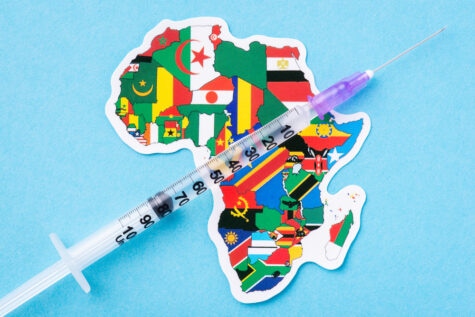Content Spotlight
Podcast: MilliporeSigma says education vital to creating unbreakable chain for sustainability
MilliporeSigma discusses the importance of people, education, and the benefits of embracing discomfort to bolster sustainability efforts.
December 20, 2023

Gavi, the Vaccine Alliance, a public–private global health partnership created with the goal of increasing access to immunization in poor countries, approved the program to empower countries in Africa to contribute to healthy global vaccine markets, as well as outbreak and pandemic prevention, preparedness, response and resilience.
“Today’s historic decisions illustrate the very best of our Alliance – collaboration across the full range of immunisation partners, constantly seeking to learn and improve, and most importantly, taking concrete action,” said Professor José Manuel Barroso, chair of the Gavi board.
“Gavi has worked closely with the countries, the African Union, Africa CDC, G7, G20, and other donors, WHO, UNICEF, civil society, industry, and experts to put into place innovative mechanisms that have the power to reshape our approach to regional manufacturing and pandemic response, and we are grateful for the continued commitment of our Board to the effort to ensure no one is left behind with immunisation.”
In 2021, in the middle of the COVID-19 pandemic, there were fewer than 10 African manufacturing companies dedicated to vaccine production, based in five countries: Egypt, Morocco, Senegal, South Africa and Tunisia.
Upstream production was very limited and most local companies were dedicated to packaging and labelling, with only a few occasionally fulfilling fill and finish steps.
There were, on the whole continent, only 80 sterile injectables facilities; a very small number considering the primary dosage form in Africa comes in vial form. With fewer than 100 million doses produced, Africa was also lacking large-scale capacities.
The vaccine capacity in Africa was almost entirely focused on supply to internal markets, with little to no export possibilities. This was due on one hand to technical issues such as the lack of facilities, quality systems, and no skills being developed among the population. Unsurprisingly, the other big issue was the lack of financing and procurement channels.
Africa accounts for circa 20% of the world’s population. However, the vaccine industry provides only around 0.2% of the global supply.
Trying to keep up with the African Union’s objective of producing 60% of African vaccines on African soil by 2040, AVMA is designed to offer two types of incentive payments.
The first ‘milestone payment’ will be granted once the WHO pre-qualification (PQ) stage is achieved for one of the vaccines included in Gavi’s priority list. This will help the manufacturer to offset some of the high costs required to meet the standards for PQ.
The second ‘accelerator payment’ will be paid on top of each dose produced, in addition to the market rate a manufacturer receives after winning a Gavi-UNICEF tender. Once again, the highest payments (around $0.50 per dose) will be granted to the end-to-end manufacture of priority vaccines, and those vaccines produced using ‘pandemic ready’ technology platforms.
Several factors are taken into consideration when establishing the strategic importance of a vaccine, such as the need to build resilience against certain outbreak-prone diseases, or commercial opportunities for sustainable new market entrants.
Among the vaccines that have the product profile optimised to meet African requirements Cholera, Malaria, Measles-rubella or Ebola are all given priority.
AVMA is designed to provide incentives for ten years and support, at a minimum, four African vaccine manufacturers to operate sustainably and at scale to win Gavi/UNICEF tenders for the production of over 800 million vaccine doses.
The biotech sector in Africa is still young, and it will take time for new manufacturers to build the production scale required to be sustainable.
Different models of manufacturing were taken into consideration when designing the program. The one considered the most likely to be the best starting point is fill/finish capacity, or drug product manufacture. This model allows for collaboration with multiple partners for multiple products using a single formulation/filling line.
From this, the industry could move onto stepping up the manufacturing value chain and install capacity to produce drug substance, antigen or active pharmaceutical ingredients, allowing the companies to manage the investment risk upfront and build know-how in a steady manner.
You May Also Like